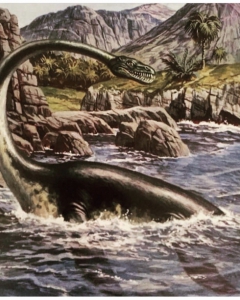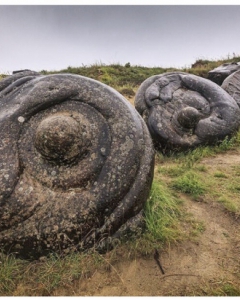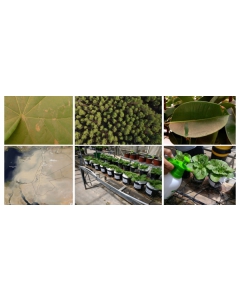Algae gene therapy helps blind people restore part of their vision
Blind people can now see blurry shapes thanks to gene therapy and specially crafted glasses.
In a report published May 24 in the journal Nature Medicine, the patient in the study was a man who was diagnosed with retinitis pigmentosa 40 years ago at the age of 18. National (NEI), people with retinitis pigmentosa carry faulty genes due to multiple mutations that cause the light-sensitive cells in the retina at the back of the eye to "damage".

Algae gene therapy helps blind people restore part of their vision / ph: pexels
These genes normally encode functional proteins in the retina. However, in people with the disease, faulty genes can't make those proteins, or make abnormal proteins that don't function properly or produce substances that directly damage retinal tissue. According to the NEI, the condition affects 1/4,000 people worldwide and can sometimes lead to complete blindness, as happened in the 58-year-old patient in the new study.
According to MIT Technology Review Journal of the Massachusetts Institute of Technology, in an attempt to treat the man's vision loss, scientists inserted genes that encode a light-sensing protein into a virus that has already been detected, then inject that gene-edited viral vector into the patient's eye. The protein, called ChrimsonR, is a version of the light-sensitive protein found in single-celled algae, which allows the single-celled organism to detect and move toward sunlight.
ChrimsonR belongs to a family of light-sensitive proteins, called channelrhodopsins (subfamily of retinylidene proteins that function as light ion channels; act as sensory receptors in single-celled green algae; control phototaxis in response to light) and has been modified to respond to colors that are in the red end of the color spectrum, specifically amber light. By injecting the ChrimsonR gene into the retina, specifically into retinal ganglion cells, a type of nerve cell that sends visual signals to the brain, the team hopes to make these cells sensitive to orange-yellow light.
Meanwhile, special glasses pick up changes in light intensity from the environment and then convert that signal into a high-intensity, amber image that's projected directly onto the patient's retina for the purpose of activating ChrimsonR.
After several months, a significant amount of ChrimsonR accumulated in the man's eyes and began to change the patient's vision. Eventually, this man began to perceive different types of light with the help of goggles.
"Patients recognized, located, counted and touched" various objects with their treated eyes and while wearing the glasses, the researchers said. For example, the patient can see a notebook and cups placed on the table in front of him, can even give the exact amount.
Prior to the treatment, the man was unable to detect any objects, with or without goggles. After injecting the ChrimsonR gene into the retina, the patient could see but only with glasses, because the glasses would convert all light to amber, the researchers said.
In addition to the notebook and cup, the patient reported seeing white lines on the pedestrian crossing. According to the team, patients started exercising with goggles about four to five months after the injection and began to notice an improvement in their vision about seven months later.
Algae gene therapy helps blind people restore part of their vision
Is Time travel about to come true?
A physicist has discovered the math that makes time travel become a reality without the influence of paradox.
A physicist has discovered the math that makes time travel become a reality without the influence of paradox.
Read moreChinese scientists claim to hold the key to extend lifespan
Chinese scientists have developed a new gene therapy that could reverse some of the effects of aging in mice and prolong their lifespan.
Chinese scientists have developed a new gene therapy that could reverse some of the effects of aging in mice and prolong their lifespan.
Read moreFinally, the truth about the mysterious Loch Ness monster is revealed
The mysterious Loch Ness monster has finally been confirmed by scientists that the legendary monster is actually an ancient sea turtle.
The mysterious Loch Ness monster has finally been confirmed by scientists that the legendary monster is actually an ancient sea turtle.
Read moreThe most mysterious rock in the world can be born, grow and move like a living organism
Trovants rocks in Costesti village, Romania is the most mysterious rocks in the world that can be born, grow and move like living organisms.
Trovants rocks in Costesti village, Romania is the most mysterious rocks in the world that can be born, grow and move like living organisms.
Read moreDiscover plants absorb nutrients from dust in the air
Some desert plants live in a controlled dusty environment, able to absorb phosphorus through the leaves for faster growth.
Some desert plants live in a controlled dusty environment, able to absorb phosphorus through the leaves for faster growth.
Read more








